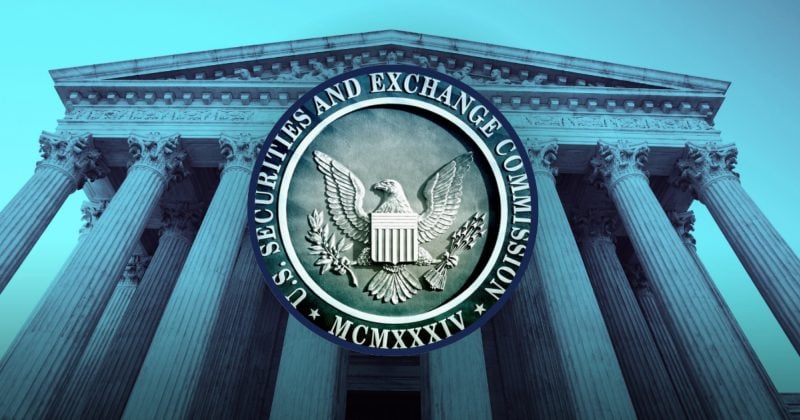Key Takeaways:
I. The approval of dual Bitcoin-Ethereum ETFs democratizes access for institutional investors, lowering barriers to entry and simplifying investment processes.
II. While volatility remains inherent in the crypto market, strategic diversification and risk management techniques are crucial for navigating these fluctuations.
III. The evolving regulatory landscape demands continuous monitoring and adaptation, as future SEC leadership and global regulatory frameworks will shape the trajectory of crypto ETFs.
The SEC's approval of dual Bitcoin-Ethereum ETFs from Hashdex and Franklin Templeton marks a pivotal moment in the cryptocurrency market's evolution. This decision transcends the realm of regulatory approvals; it signifies a profound shift in the institutional perception of digital assets, paving the way for increased mainstream adoption and integration into traditional finance. Amidst ongoing market turbulence and regulatory scrutiny, this development has far-reaching implications for investors, regulators, and the future of the crypto ecosystem. This article delves into the core of this paradigm shift, providing a nuanced analysis of its impact on institutional investment strategies, market dynamics, and the evolving regulatory landscape.
The Institutional Imperative: Why Crypto ETFs Are a Strategic Necessity
The SEC's approval of dual Bitcoin-Ethereum ETFs signifies a watershed moment for institutional cryptocurrency investment. Previously hindered by regulatory ambiguity and operational complexities, institutions now have a clear, regulated pathway to allocate capital to these digital assets. This development mirrors the transformative impact of gold ETFs, which broadened access and fueled institutional adoption of gold as a mainstream investment.
The surge in institutional interest is reflected in the substantial capital already flowing into Bitcoin ETFs. As of December 2024, these ETFs hold over 1.13 million BTC, with a total AUM exceeding $121.83 billion. The iShares Bitcoin Trust ETF (IBIT) alone accounts for over $57 billion in AUM. While Ethereum ETFs are relatively nascent, the iShares Ethereum Trust (ETHA) has quickly garnered around $4 billion in AUM, indicating growing institutional confidence in Ethereum's potential.
Beyond short-term speculation, Bitcoin's inherent properties position it as a strategic asset for institutional portfolios. Its fixed supply of 21 million coins, coupled with increasing global adoption, creates scarcity and reinforces its potential as a long-term store of value. In an environment of persistent inflation and macroeconomic uncertainty, Bitcoin offers a compelling hedge against fiat currency devaluation and traditional market risks, akin to digital gold.
Furthermore, the low correlation of cryptocurrencies with traditional assets enhances their diversification benefits. Incorporating Bitcoin and Ethereum into a multi-asset portfolio can reduce overall portfolio risk while potentially boosting returns. This diversification potential is a key driver of institutional interest, as it allows for more efficient portfolio construction and enhanced risk-adjusted performance.
Navigating Volatility: Risk Management Strategies for Crypto ETF Investors
Volatility is an inherent characteristic of the cryptocurrency market. The recent 8% and 15% price drops for Bitcoin and Ethereum, respectively, following the ETF approvals underscore this reality. However, for long-term, strategically oriented investors, volatility is not necessarily a deterrent. It presents both challenges and opportunities, requiring a disciplined approach to risk management and a focus on the long-term growth potential of digital assets.
Understanding the drivers of crypto market volatility is crucial. Regulatory developments, macroeconomic conditions, market sentiment, and the underlying supply and demand dynamics of each asset all play a role. The introduction of ETFs has introduced a new dynamic, with institutional investors now exerting a greater influence on price discovery. Analyzing correlations, both between cryptocurrencies and with traditional assets, is essential for informed decision-making.
Managing volatility requires a strategic toolkit. Diversification across various asset classes, including both traditional and digital assets, can mitigate overall portfolio risk. Hedging strategies, using derivatives like futures and options, can protect against potential losses. Furthermore, setting stop-loss orders and carefully managing position sizes can limit downside exposure. These strategies, combined with a deep understanding of market dynamics, are essential for navigating the crypto market.
Institutional investors must approach crypto with a long-term perspective, recognizing that short-term volatility is a characteristic of nascent yet transformative markets. By integrating robust risk management frameworks and understanding the interplay of market forces, institutions can position themselves to capitalize on the long-term growth potential of the digital asset class.
The Evolving Regulatory Landscape: Charting the Future of Crypto ETFs
The regulatory landscape for crypto ETFs is a complex and evolving mosaic, varying significantly across jurisdictions. The US, while having approved Bitcoin and Ethereum ETFs, maintains a cautious approach with ongoing scrutiny. The EU's MiCA framework aims for harmonization across member states, while Asian countries present a diverse range of regulatory stances, from proactive support to strict restrictions. Navigating this fragmented landscape requires a nuanced understanding of each jurisdiction's specific regulations.
Regulatory uncertainty surrounding cryptocurrencies like Solana and XRP poses a significant challenge for ETF development. The SEC's cautious approach, coupled with ongoing legal battles in the crypto space, creates ambiguity for potential ETF issuers. Potential changes in SEC leadership in 2025 introduce another layer of uncertainty. Adaptability and proactive engagement with regulatory developments are crucial for navigating this evolving landscape. A multi-scenario planning approach, considering various regulatory outcomes, is essential for strategic decision-making.
The Future of Finance is Digital: Embracing the Strategic Imperative
The SEC's approval of dual Bitcoin-Ethereum ETFs marks a pivotal moment in the ongoing convergence of digital assets and traditional finance. This is not merely a product innovation; it's a catalyst for a fundamental transformation in how institutions approach portfolio construction and risk management. By embracing a strategic, data-driven approach, acknowledging both the opportunities and challenges, institutional investors can position themselves at the forefront of this evolving landscape. The future of finance is digital, and the time for strategic action is now.
----------
Further Reads
I. How ETFs and institutions are driving the surge in Bitcoin prices | Reuters
II. CRYPTO GOES INSTITUTIONAL IN 2024 WITH ETFs AS MAJOR DRIVERS - GDF
III. You Won't Believe How Much Institutional Crypto Trading Has Exploded in 2024









